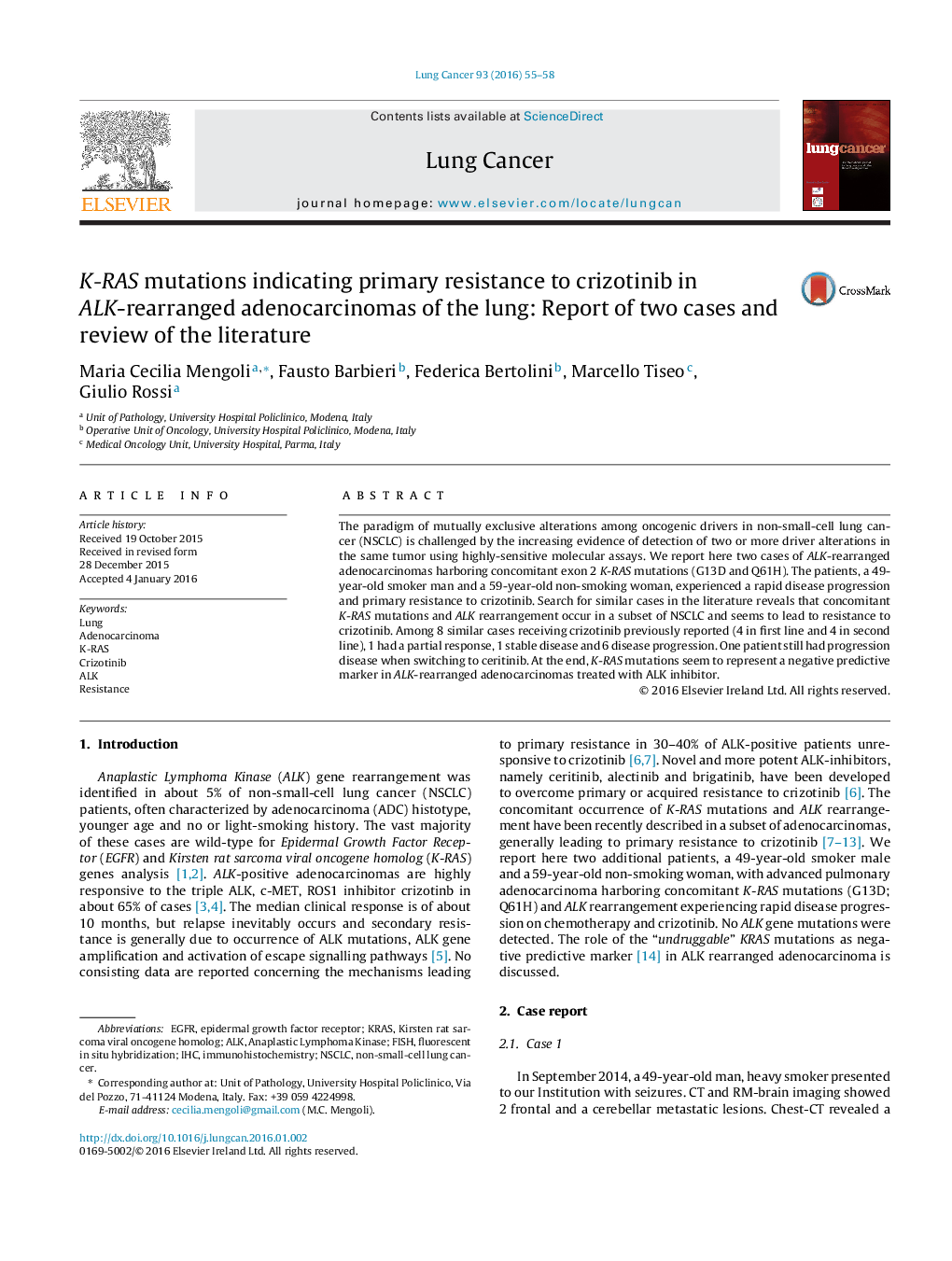| کد مقاله | کد نشریه | سال انتشار | مقاله انگلیسی | نسخه تمام متن |
|---|---|---|---|---|
| 2140451 | 1547974 | 2016 | 4 صفحه PDF | دانلود رایگان |
• K-RAS and ALK alterations in NSCLC may co-exist.
• K-RAS mutations confer crizotinib resistance to ALK-rearranged NSCLC.
• K-RAS appears a strong negative predictive marker in oncogenic-driven NSCLC.
The paradigm of mutually exclusive alterations among oncogenic drivers in non-small-cell lung cancer (NSCLC) is challenged by the increasing evidence of detection of two or more driver alterations in the same tumor using highly-sensitive molecular assays. We report here two cases of ALK-rearranged adenocarcinomas harboring concomitant exon 2 K-RAS mutations (G13D and Q61H). The patients, a 49-year-old smoker man and a 59-year-old non-smoking woman, experienced a rapid disease progression and primary resistance to crizotinib. Search for similar cases in the literature reveals that concomitant K-RAS mutations and ALK rearrangement occur in a subset of NSCLC and seems to lead to resistance to crizotinib. Among 8 similar cases receiving crizotinib previously reported (4 in first line and 4 in second line), 1 had a partial response, 1 stable disease and 6 disease progression. One patient still had progression disease when switching to ceritinib. At the end, K-RAS mutations seem to represent a negative predictive marker in ALK-rearranged adenocarcinomas treated with ALK inhibitor.
Journal: Lung Cancer - Volume 93, March 2016, Pages 55–58
